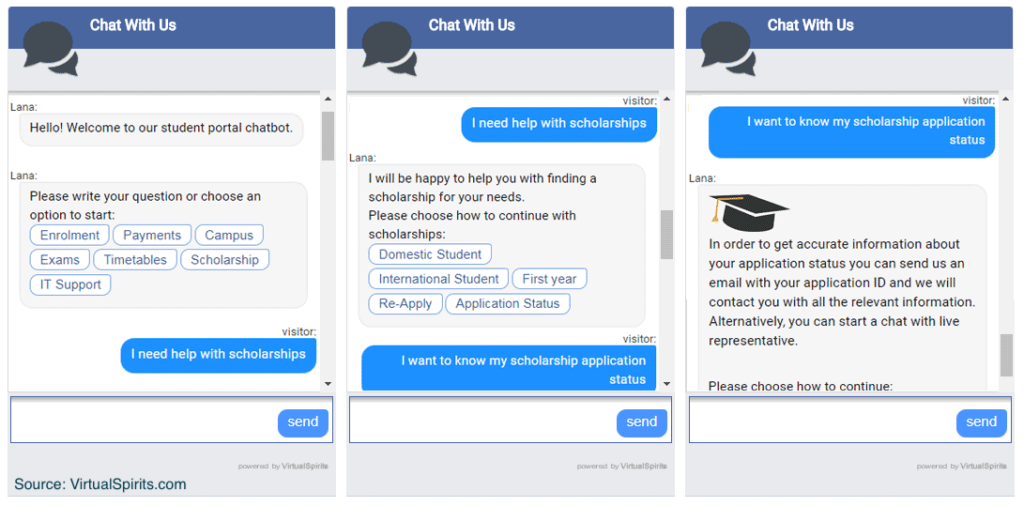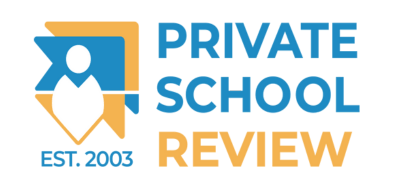By Maggie Twaroski, Truth Tree Contributor
School communications have undergone significant advances in recent years, especially through automation and artificial intelligence. Still, not all schools have fully invested in advanced communication practices that appeal to increasingly digitally-driven audiences. Schools that do are therefore more likely to stand out amongst school shoppers and will have an easier time retaining current families who expect fast, personalized communication.
Trevor Waddington, Principal of Truth Tree had this to say about advanced communication as a value driver:
“Advanced communication from home to school is a fast-rising value driver. Therefore, expect a surge in schools prioritizing advanced, AI-powered communication platforms for the current community and enrollment marketing purposes. For example, admission tours can be scheduled through conversational AI, parents will be able to order lunch via text, and student counselors will be alerted in real-time when a student has fallen behind across classes.”
As advanced communication becomes a key differentiator in a competitive market, schools should find opportunities to take current school-home communication practices up a notch. Let’s unpack the benefits of modernizing communication, suggestions for tracking communication, and helpful tools.
Why should schools modernize school-home communication?
Effective school-home communication is a major priority for families, especially as the everyday platforms we use to communicate become smarter and easier to use. Fast, personalized communication is the norm now, and families expect that same user experience within their schools.
A recent survey of K-12 families found that their dissatisfaction with school-home communication largely stemmed from infrequent, irrelevant, and unclear communication. To help resolve this, over 70% of families reported a desire for tailored communication that is specific, relevant, and actionable. Schools should resolve to meet these preferences by regularly assessing communication metrics and keeping strategies agile.
Track communication patterns
As your families’ communication patterns evolve, it’s important to conduct regular evaluations to see where families are the most engaged, and where communication is lacking. Fortunately, tracking communication patterns is easy with most of your current systems, including Google Analytics, email, and social media. With built-in tracking tools, these platforms allow you to view important engagement metrics on your messages–from time-sensitive alerts to routine school news.
Google Analytics
Your website is typically the first point of contact for families seeking information, so tracking your website analytics can shed powerful insights into the type of information families need or may be lacking. Use your website analytics to identify which pages generate the most traffic, how long users remain on pages, and which terms they search when they visit your site. Use these findings to create additional or easier communication around these areas–whether it’s better website navigation or more targeted emails.
Email still remains the most-used marketing and communication platform, with most users checking their email at least once a day. Despite email’s potential to reach and engage families, a startling number of emails are still considered irrelevant or unhelpful. Research from Adobe found that only 57% of personal emails are opened, and only 37% of emails were found useful.
School communication offices should see this concerning data as an exciting opportunity to be one of the schools that actually delivers engaging, relevant emails users want to open. Use your built-in email analytics to track open rates, click-through rates, and bounce rates (among others) to make strategic adjustments to your email communication plan.
Text Message
Many schools utilize SMS for campus-wide messaging in an emergency, like school closure notices or an electricity outage. These messages often direct students and parents to “check your email for more information”. SMS marketing holds a 98% open rate, making it a growing opportunity to weave SMS as a communication tool beyond emergency messaging. While Higher Ed has tapped into this extensively for admissions and financial aid, more and more K-12 schools are seeing the advantages of higher engagement and segmented nurturing.
Social media
Your social media presence reveals a lot about the health of your school communications broadly. For instance, a growing number of social followers and positive post impressions indicate that your messaging is strong and able to effectively reach and engage your school’s demographics. If your social media metrics still leave something to be desired, it could be a sign your messaging needs a refresh, or you need to take a more focused approach to social outreach. Either way, you can assess the health of your social media communications with a mini social media audit on your top platforms like Facebook, Instagram, or YouTube.
Provide accessible communication
Communicating with non-English speaking families continues to be a challenge for many schools, with only half of districts reporting they can communicate effectively with non-English speaking families. Insufficient bilingual communication can potentially leave huge numbers of your families out of touch with important information on their children’s education. Equipping your website, portal, app, or other communication platforms with translation capabilities ensures every family receives the information they need in a timely, personalized manner.
Aside from advancing language capabilities, providing accessible communication also entails opening up the pathways for families to communicate with your school. Look for opportunities to encourage two-way communication between parents and staff to foster deeper engagement and support, including surveys and feedback forms.
Utilize artificial intelligence for efficient communication
Integrating artificial intelligence into your communication tools poses big benefits to your staff and families. Aside from reducing the manual tasks associated with crafting and delivering messages, AI can help make your school more competitive among digital-focused families. Predictive analytics, automatic scheduling, and student progress alerts are only some of the benefits AI can bring to the table. Its value extends throughout the entire enrollment lifecycle and helps to retain current families with ongoing support at scale.

Website chatbots, for instance, support families 24/7 with immediate, personalized, multilingual information. Additionally, the increasing need for engaging emails may necessitate assistance from AI tools that automatically predict the most effective emails for each user–whether it’s subject lines, email frequency, or delivery time.
Here are three AI tools that can enhance your communication channels:
With easy setup and pre-made school templates, ChatBot is a helpful AI tool for your website visitors and internal communications team. ChatBot can integrate with both your website and Facebook Messenger, extending your reach and advancing communication on one of your most important social platforms. Plus, the tool automatically saves user details to your database and organizes users into current students and new applicants, so you can keep your segments up to date.
Families interacting with Juji’s cognitive AI chatbots will receive empathetic, human-like responses to queries throughout the entire student lifecycle, from recruitment through alumni engagement. Chatbots provide comprehensive information to FAQs like admissions procedures and financial aid, and ask open-ended questions to nurture student interest and engagement.
Comm100’s single AI bot extends to numerous communication channels, from your website, to email, to WhatsApp and more. It provides timely, multilingual support to families throughout the entire enrollment lifecycle, helping to bridge the gaps between initial queries, to live chats, to direct interactions with staff.
Let advanced communication be a key value driver
Communication is a driving force in families’ search for schools. A school that delivers relevant, personalized, and engaging messages on all its platforms is well-positioned to attract and retain its ideal students. Assess the current health of your communication plan to see how well families engage with your messages, then elevate your platforms with artificial intelligence.
Is Partnering with Truth Tree Right for Your School?
Our team has supported schools of all sizes and types as they aim to grow their enrollment, strengthen their retention, and solidify their digital footprint.
How could our skills impact your school?











